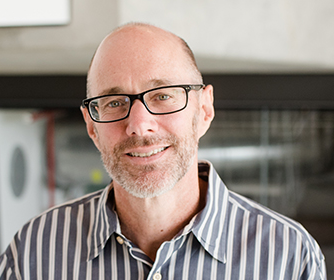Carbonate mineral reactions during geological carbon sequestration, and implications for induced seismicity - Charles Werth, UT-Austin
Charles Werth, Professor & Bettie Margaret Smith Chair of Environmental Health Engineering in the Department of Civil, Architecture, and Environmental Engineering at the University of Texas at Austin.
Abstract: Geologic carbon sequestration in deep saline aquifers results in a low pH brine plume that pushes into subsurface storage reservoirs and can access pre-existing or induced (micro)fractures and possibly induce shear slip. To investigate this phenomenon, an artificial fracture was created in a Bandera Gray sandstone sample, and it was held under shear stress in a custom flow cell housed within an industrial CT scanner. Acidic (pH 4) or reservoir-simulated (pH 8.3) brine was pumped through the artificial fracture for seven days. CT imaging shows that acidic brine resulted in greater shear slip than reservoir-simulated brine, and fracture surfaces exposed to acidic brine had rougher surfaces and lower fracture toughness. SEM images of fracture surfaces indicate a loss by area of carbonate cementing crystals after exposure to the acidic brine, as well as a corresponding porosity increase. These results motivated more fundamental studies on carbonate mineral dissolution using freshly cleaved calcite. The effects of solution pH, carbonic acid, and the presence of an anionic surfactant on calcite dissolution kinetics and etch pit morphology were probed in a high pressure and temperature reactor, and complemented with density functional theory calculations. Results indicate that carbonic acid promotes much faster dissolution than protons or water, and that the anionic surfactant inhibits dissolution by competing with carbonic acid for calcium edge sites on the calcite surface. Hence, addition of anionic surfactants to injected CO2 may inhibit calcite dissolution and slip along existing fractures.

About: Dr. Werth is a Professor and the Bettie Margaret Smith Chair in Environmental Health Engineering at the University of Texas at Austin. His research and teaching focus on the reactive transport of water pollutants in porous media, with applications in (electro)catalytic water treatment, groundwater remediation, and geological carbon sequestration. He is editor of Journal of Contaminant Hydrology, and previously served on the USEPA Science Advisory Board. He received his BS degree in mechanical engineering from Texas A&M University, and MS and PhD degrees in environmental engineering from Stanford University.
